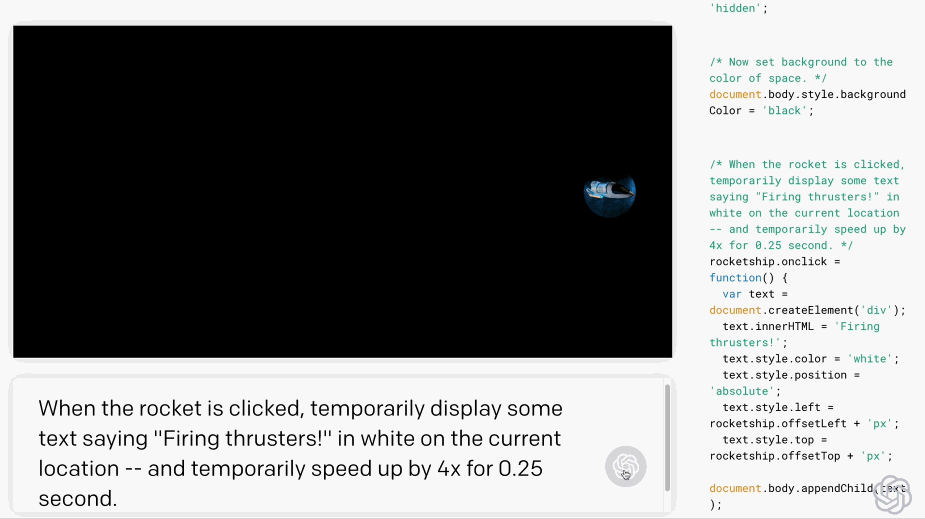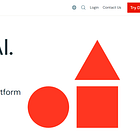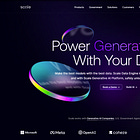We are in the middle of the AI super cycle. Chips, cloud, and model platforms have pushed the stock market to multiple record highs, and a second wave is moving through everyday software and early robotics. The question is no longer why invest in AI, but how and where. This is a guide for typical individual investors rather than professional investors or ultra-high-net-worth families — the 98% of investors who want exposure to AI, not the top 2% who have access to unique investment opportunities.
This guide focuses on equities: public stocks and private company shares. We are not covering credit, convertibles, or land for data centers. Think of what follows as a menu you can choose from based on your appetite for selection and liquidity.
There are two dimensions to the menu. Public vs. private tells you where a company trades and how liquid it is. Active vs. passive tells you how much selection you want to make. Private deals can be compelling but are illiquid. Public markets are accessible and easy to trade. Within public markets, passive means tracking an index at low cost. Active means leaning into a theme or specific companies you believe can beat the market. That said, I won’t recommend specific companies in this article.
Public Markets Overview
From the beginning of 2023 to the end of August 2025, the S&P 500 rose 69%, roughly 22% annualized over that period. This is several times higher than the long-run average gain of 10% annually. The Magnificent 7 (MAG7) — Google, Microsoft, Amazon, Meta, Tesla, Apple, NVIDIA — contributed 40% of the gain. While the economy also grew and favorable business policies were enacted during the same period, most of the gain was driven by the business of generative artificial intelligence.
A more precise view of how AI is affecting the public markets can be gleaned through an index of companies for whom AI is a core strategy. I have been maintaining a list of 100 stocks, and collectively it has increased 157% versus 69% for the S&P 500 and 107% for the Nasdaq. Looking at the chart below, the lines broadly follow the same patterns since most of the gains are driven by the same several stocks like the MAG7.
Passive strategies for the public markets
There are two paths to passive public investing: AI-themed ETFs or the broad market.
Most AI-themed ETFs bundle the obvious AI infrastructure companies — chips, cloud, and model platforms. They will rise faster when AI excitement is high but also fall harder when it cools. They usually charge slightly higher fees, although still negligible, and often lean heavily on a few big stocks. If you pick one, favor larger funds with at least about $1B in assets so it’s easier to buy and sell. While almost any tech-oriented ETF is now AI-driven, there are more AI-focused ones like:
Broad index ETFs like the S&P 500 or Nasdaq-100 are also good choices. They’re simple, diversified, and have plenty of AI exposure given the MAG7 are driven by the AI narrative. The broad indexes also expose you to the rest of the economy that will benefit from AI. AI agents can draft replies, pull records, route approvals, and close routine tickets, while robots take on physical work in warehouses, roads, and factories. Morgan Stanley analyzed every S&P 500 company by mapping employee roles against tasks AI agents and robots could take on. Their estimate: AI could add about $920 billion to S&P 500 pre-tax profit, or roughly 28% of projected 2026 earnings. While this isn’t a forecast of full adoption by that date, it is a measure of potential impact. The key point is that AI’s gains extend well beyond a few big tech names, and a broad index lets you capture that diffusion at low cost and with less single-stock risk.
Active strategies for the public markets
I will neither discuss specific companies here nor how to evaluate a business. There are already plenty of resources for that. Instead, I will go through three AI themes I am investing in. I like thematic investing because it helps narrow the consideration to a handful of companies instead of hundreds. You pick a wave, learn how the business works across the value chain, and build a small basket of companies you like. The three themes are: smart glasses, autonomous vehicles, and agentic software.
Smart glasses (AI glasses)
The interface is shifting from tap-and-type to look-and-ask. Smart glasses are becoming mainstream, with millions of Meta Ray-Bans sold. They are appearing in major retail stores priced like smartwatches. That matters because price bands and shelf space change the demand curve. With AI, glasses have new practical capabilities: hands-free capture, quick messaging, navigation prompts, translation, and “show what I’m seeing” without fishing for a phone. The new Meta Display glasses, with a built-in display, add another layer of practical capabilities: navigational guidance, visual feedback, and more.
How to build exposure:
Devices & platforms: broad consumer pull and software upside. Examples: Meta, Google (soon), Samsung,
Retail and eyewear design partners: for consumer brand awareness and distribution. Examples: Essilor Luxottica, Warby Parker.
System silicon & vision: shared components that power multiple brands. Examples: Qualcomm, Ambarella, ON Semiconductor.
Optics & materials: inputs that scale with units. Example: Corning.
Autonomous vehicles
Autonomous vehicles, specifically Waymo, are rapidly expanding to major cities. In California, monthly driverless trips climbed from ~12k (Aug-2023) to ~708k (Mar-2025) as service zones expanded. In San Francisco, robotaxis overtook Lyft in gross bookings by January 2025 and reached >25% ride-hail share by April 2025, even while pricing carried a ~41% per-mile premium — a sign of demand outpacing early supply. In a forward-looking move, Lyft announced a multi-year partnership with Waymo in September, which includes Lyft investing to construct a purpose-built AV fleet management facility. Live commercial service now spans six U.S. cities, with several more in active testing in the U.S. and Tokyo.
How to build exposure
Autonomy platforms & fleet operators: the software and operations layer that turns vehicles into a service. Examples: Alphabet (Waymo), GM exposure via Cruise, Tesla (if Robotaxi launches)
Network & demand side: aggregators that funnel riders and freight to autonomous supply. Examples: Uber, Lyft.
Compute & perception: components every platform needs. Examples: Nvidia, Mobileye, Qualcomm.
Application software (agents inside everyday workflows)
Agents are moving from assist to automate inside office suites, CRM, service desks, design tools, finance, and HR. They draft, retrieve, route, approve, and increasingly finish well-scoped tasks. Distribution is already installed — millions of paid seats — so adoption can scale without changing buying behavior. The economics tie to time saved and cycle-time reduction, which is why vendors lean on clean add-ons per seat and usage meters per task or minute. AI agents are now handling tasks that take longer and are growing in complexity, with the average time per task roughly doubling every seven months — a practical signal that their scope is widening quickly.
How to build exposure
Horizontal suites with named agent SKUs: large installed bases and deep workflow hooks. Examples: Microsoft 365 and Teams, Google Workspace, Atlassian, ServiceNow
Backoffice (IT, finance, and HR) where outcomes are measured: agents tied to reconciliations, tickets, approvals, payroll, filings. Examples: Intuit, Workday, Oracle Fusion Apps.
Private markets overview
Private market exposure reaches earlier in a company’s life with less information and less liquidity. Most vehicles require accredited investor status under SEC rules. Accredited investor status exists to protect less sophisticated investors from high-risk, illiquid investments. Investment platforms will verify if you are accredited, though occasionally some rely on self-declaration. You qualify if you meet at least one of the following:
Income: $200,000 individual or $300,000 joint in each of the two most recent years
Net worth: over $1 million, excluding a primary residence
Professional certifications: Series 7, 65, or 82 in good standing
Company role: director, executive officer, or general partner of the issuer
About 20% of U.S. households meet accredited thresholds. There is also a “higher tier” of Qualified Purchaser status that opens more investment opportunities but applies to just 2% of households.
Private markets matter because more value formation now happens before listing. The number of publicly traded companies in the U.S. has fallen from approximately 7,000 in 2000 to approximately 4,000 in 2024, shrinking the investable universe for most investors. At the same time, private companies are growing, both by number and by market value. U.S. private companies now outnumber public companies by over 6.5 to 1. The aggregate estimated value of private companies in the U.S. surpassed $10 trillion in the first quarter of 2025. The number of so-called “unicorns” (private companies valued at $1 billion or more) in North America increased from 20 in 2016 to over 1,000 in 2024. At the same time, the median time from a private company’s initial financing to its IPO has increased, on average, from six years to eleven years. Some high-quality scaled businesses are delaying public listing indefinitely, even after reaching profitability (e.g., Stripe).
Passive strategies in private markets
The choices here are limited, primarily private funds that accept small checks like AngelList’s rolling funds, publicly listed private equity firms, and publicly listed venture funds. However, only a few are focused on AI. The most notable ones are:
Active strategies in private markets
Company selection matters more here than in public markets. Publicly listed companies are already the winners and leaders in their industries, so they tend to ride thematic waves. In private markets you are judging whether a specific company will become one of those leaders. Uncertainty is greatest in the earliest rounds (seed to Series A). By late stage and pre-IPO (Series D onwards) there is more evidence in revenue history, customer adoption, and margins. Unless you have unique information and access, put most of your attention on late stage. In this section, I will go through mechanics more because it is more complicated than investing in publicly listed stocks.
Two axes shape how you can participate. Direct vs. indirect describes the path to ownership. Direct means the company issues or transfers shares to you and your name appears on the cap table. That is common for employees, advisors, and investors. Indirect means you invest through a vehicle that holds the company’s shares. Single-deal SPVs are the usual structures, and your rights are those of the vehicle (not the shares directly). Primary vs. secondary describes what is being sold. In a primary, the company creates new shares and receives the cash. In a secondary, an existing holder sells to a new buyer.
For most individual investors the practical route is indirect secondaries. Primaries via vehicles do appear around marquee rounds, but secondary blocks are more common. For example, I saw SPVs for recent primary raises for marquee companies Anthropic, Replit, and Databricks. But I’ve always had opportunities to buy secondaries. Unfortunately, investing through SPVs often involves a 2% management fee and a 20% carry (a share of profits taken by the SPV owner). Some platforms instead charge an upfront 5% brokerage fee, like EquityZen.
Investing direct makes things more complicated because shareholder rights matter more. You also have more to consider: RSUs, stock options, preferred shares, and other terms. Unless you are a professional investor, you don’t want to deal with all the legalities. For example, I directly invested in a startup through a SAFE that then refused to issue the shares after they raised more money. I had to resort to months of tense conversations and eventually legal threats before getting my money back. If I had invested indirectly through a platform or SPV, they would have handled that.
There are various options to access indirect secondaries and primaries:
AngelList is the original retail-accessible route with a large network of investment syndicates and emerging managers. It is useful for single-deal vehicles in primaries and some secondaries. The strength is breadth of leads and deal flow. The practical challenge is selection because syndicates vary in diligence, communication, and cost.
EquityZen focuses on late‑stage secondaries with standardized vehicles and a flat, transparent fee schedule. The company list is curated and workflows are predictable, which makes it a strong default for late‑stage exposure.
Hiive is a live marketplace for direct secondaries with visible bids and asks. It offers price transparency, but approvals can fail and indicative prices can shift during approvals.
Forge arranges negotiated secondaries at larger scale. Its strengths are sourcing, issuer relationships, and the ability to aggregate blocks into a closing. Tradeoffs include per‑side fees, more process, and higher minimums.
While late stage shifts the risk away from company specifics (i.e., idiosyncratic risks), I still advise doing company-specific analysis. Use measures you can infer from available information, and Sacra is often a great resource for this. An example analysis would be the ones I published for Databricks and Scale AI before I invested through SPVs. It gave me conviction to invest, and so far it has paid off with ~200% gains in one to two years.
Practical takeaways
Decide your lane first: Public vs. Private for liquidity, Passive vs. Active for how much selection work you want to do.
Default option for most people: broad, low-fee index ETFs (S&P 500 or Nasdaq-100). You still get meaningful AI exposure with diversification.
If you want an AI tilt without picking stocks: use AI-themed ETFs, but favor larger funds ($1B+ AUM), check fees and top holdings.
If you want to be active in public markets: pick one theme (e.g., smart glasses, autonomy, agentic software), learn the value chain, and build a small basket. Write a half-page thesis before buying anything.
Private exposure is optional and only for those who qualify and accept illiquidity. Start with late-stage secondaries via reputable platforms rather than early seed bets. Write a one-page thesis before buying anything.
Know the mechanics in private deals: most retail paths are indirect vehicles. Deals can be delayed or cancelled.
Check what kind of equity the SPV is buying: Avoid employee options and multi-layer SPVs with egregious fees
Curated reads:







